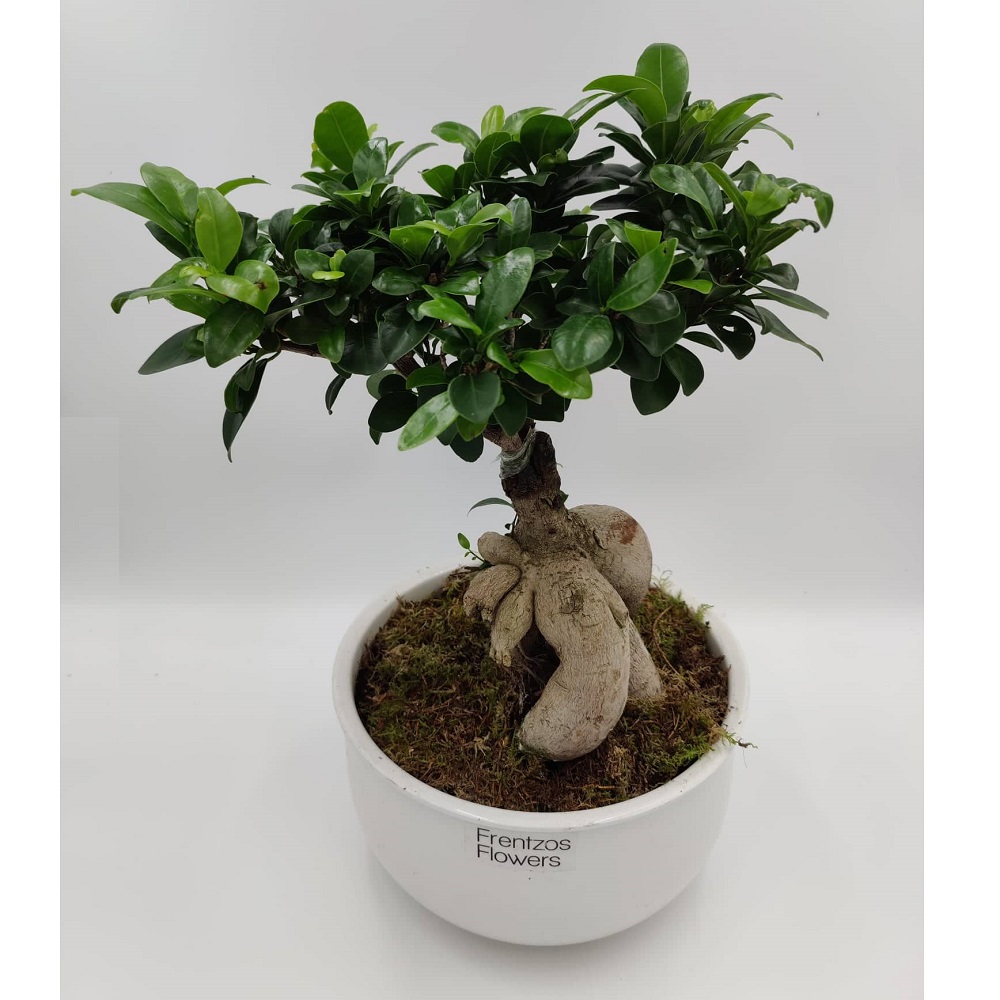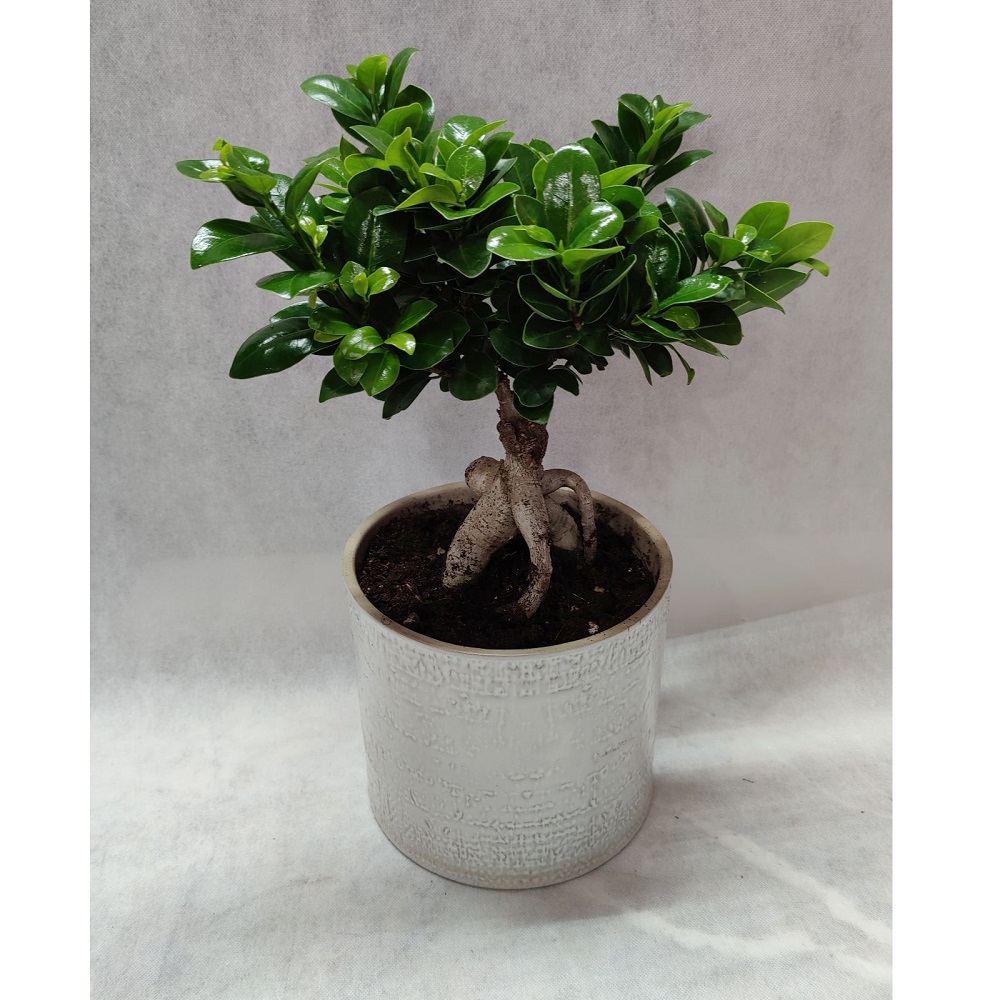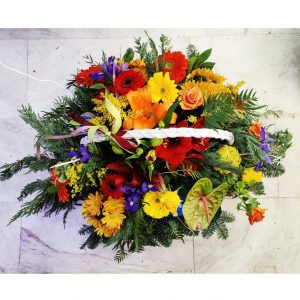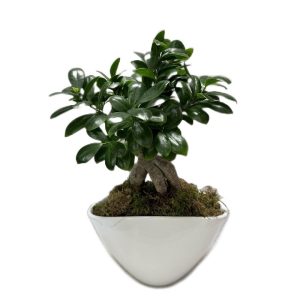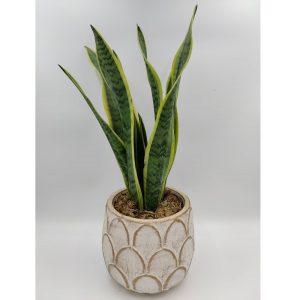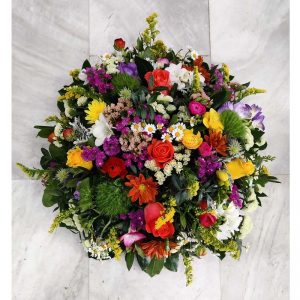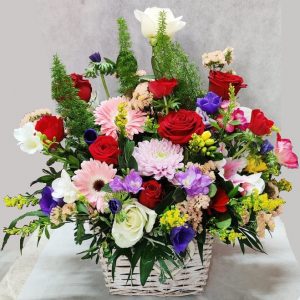Bonsai Ficus in White Pot
70,00€
In white round or square pot.
Latin name: Ficus ginseng
Family: Ficus
Lovely miniature trees, just the thing for feng shui lovers! Bonsai is a symbol of honour and prestige, of harmony between nature and the soul and the individual. By choosing this plant we can have a living art painting in our home! Suitable for any occasion. It is recommended for a business gift, for a housewarming, for a birthday, a celebration, for a simple visit, and of course to decorate your home and office.
Its leaves are small, shiny and green, while its trunk has a special design that either looks like a braid or is wavy. It is a perennial plant, in small, shallow pots to limit its growth and keep it miniature. The dwarf tree is therefore kept in a bright place, but direct exposure to sunlight should be avoided. In Chinese Ginseng means “root”. It is advisable to place it in a place away from drafts. During the growing season, i.e. the summer months, we need to provide more water than in winter.
The art of bonsai began to develop from 1000 AD. The word “bonsai” essentially means “small tree in a tray”. The first authentic evidence of bonsai trees dates back to the beginning of the 14th century AD. For the Japanese, bonsai represents a blending of strong ancient beliefs with Eastern philosophies of harmony between the individual, the soul and nature. In addition, an ancient Japanese saying written in Japan during the Kamakura period states that: “To appreciate and find pleasure in the oddly shaped and pot-shaped trees, you must love deformation.” Bonsai were brought inside homes on special occasions by the Japanese aristocratic elite and became an important part of Japanese life by displaying them on specially designed shelves. Later, in the 17th and 18th centuries, the Japanese arts reached their absolute peak and influenced all neighboring populations. Bonsai can live for hundreds of years, while the older bonsai are considered collectible artifacts passed down from generation to generation.
Available all year round.
Related products
-
Colours and Fragrances
- 120,00€
- Add to cart
-
Bonsai Elegant
- 102,00€
- Add to cart
-
Vintage chanterelles
- 70,00€
- Add to cart
-
The Spring
- 40,00€ – 60,00€
- Select options
-
Happy & Lovely
- 65,00€
- Add to cart


